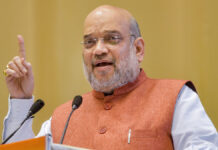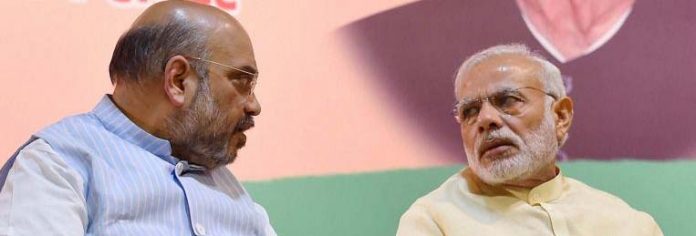The Bharatiya Janata Party was voted out of power in the three major states of Madhya Pradesh, Rajasthan and Chhattisgarh. The voters with their verdict proved that it was more important to provide roti to people than building the Ram Temple. The BJP’s electoral loss may help regional forces like the Biju Janata Dal in Odisha, where the saffron party hopes to get more Lok Sabha seats to compensate the numbers to be reduced from the Hindi heartland in 2019.
The results of assembly elections in five states announced on December 11 have only bad news for the Bharatiya Janata Party, which has been ruling the country for more than four and a half years.
In fact, the BJP losing power to the Congress in the three major states of Madhya Pradesh, Rajasthan and Chhattisgarh is a big setback to Prime Minister Narendra Modi, who will be facing the country’s voters after few months for a second term in office.
Usually, the BJP and Congress come to power alternately in Rajasthan every five years. But the BJP was ruling Madhya Pradesh and Chhattisgarh since 2003. In Telengana, Telengana Rastra Samithi swept the polls while the Congress and Telugu Desham Party combine emerged as the main opposition. The BJP finished a dismal third. In Mizoram, the Congress lost the power to Mizo National Front but the BJP finished third.
After their defeat, many spokespersons of the BJP tried to send a message across that the elections in the five states were not a fight between Modi and Rahul Gandhi. They conveniently tried to ignore the fact that the party ran a high decibel campaign with whirlwind tours by Modi, Shah and Uttar Pradesh chief minister Adityanath who addressed several rallies. But still it lost the Hindi heartland to the Congress and could not make much headway in Telengana and Mizoram where it got one assembly seat each.
That is because the BJP leaders did not have many achievements to talk about in their rallies. They did not want to talk about pressing issues affecting a majority of people in the country either. So the BJP campaigns mostly focused on construction of Ram Temple and Rahul Gandhi’s “gotra”, and if he was a Brahmin. Modi blamed Jawaharlal Nehru for everything that was bad in India. He also talked about “Congress’ widow”. Adityanath said in rally after rally that if they (Muslims) had Ali, we (Hindus) had Bajrangbali.
But voters did not seem to be impressed by the rhetoric. Especially in the three Hindi belt states of Rajasthan, Madhya Pradesh and Chhattisgarh, people were quite aware of farmers’ plight, joblessness, rising petrol and diesel prices, downward economic trend – the real issues that should have been debated in political discourses and television studios. Not surprisingly, the BJP was voted out of power in the three states. The voters with their verdict proved that it was more important to provide roti to people than building the Ram Temple.
The results in the five states have also made Modi more vulnerable than ever. His aura of invincibility has been falling apart gradually since the last year’s elections in Gujarat, which the BJP won by the skin of its teeth. The national TV channels may give high ratings of popularity for him, but the fact remains than the BJP has been performing badly in every polls and by-polls since January and increasingly Modi is turning into a liability from an asset for his party.
The Congress has strengthened its footprints in Rajasthan, Madhya Pradesh, but it has to be cautious about its achievements. Though the party had a landslide win in Chhattisgarh, its performance left much to be desired in Madhya Pradesh and Rajasthan despite widespread disillusionment of people against the BJP governments there. The BJP’s large cadre base and governmental resources may have minimised the damage to a large extent. The Congress needs to improve its cadre base at the ground to match that of the BJP’s at the time of the general elections.
The BJP’s electoral loss may help regional forces like the Biju Janata Dal in Odisha and Trinamul Congress in West Bengal, where the saffron party hopes to get more Lok Sabha seats to compensate the numbers to be reduced from the Hindi heartland in 2019. After Shah had set a target of capturing 120 out of a total of 147 assembly seats in Odisha, neighbouring Chhattisgarh was a vital link for material and logistic resource supply during elections here. That link was chocked with the defeat of the BJP in Chhattisgarh.
The Congress’ win in the three states gives a chance to its Odisha unit to revive its fortunes. With the Congress assuming power in Chhattisgarh, its Odisha unit now can avail the same vital link that was with the state BJP to improve its base along bordering districts.





































